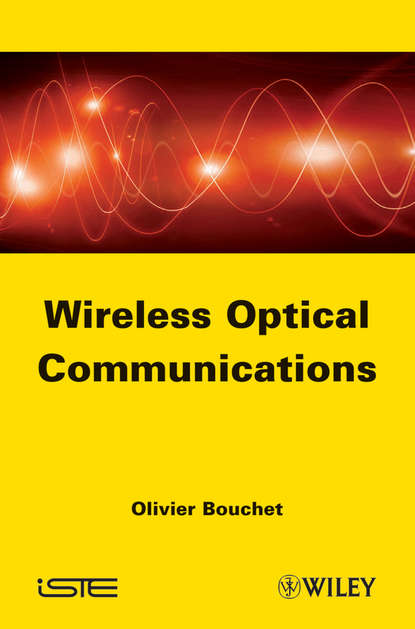Беспроводная оптическая связь - это связь, основанная на распространении оптических волн в свободном пространстве. За последние 30 лет в этой области достигнут значительный прогресс - беспроводное решение для связи в нынешнем тысячелетии, представляющее альтернативу радиосистемам. Этот метод может получить более широкое распространение в связи с недавними опасениями относительно потенциального влияния радиочастотных волн на здоровье человека.
Цель этой книги - рассмотреть использование оптической связи для передачи информации на сегодняшний день, ее многочисленные преимущества, такие как учет свойств канала, модели распространения, бюджеты линии связи, обработка данных, включая кодирование, модуляцию, стандарты, а также вопросы безопасности (например, IEC 60825 или FCC Class 1). Все это станет незаменимым в ближайшее десятилетие при разработке компьютерных архитектур для телекоммуникаций малого, среднего и большого радиуса действия по мере перехода от гигабит к терабитам в секунду.
"Беспроводная оптическая связь" - отличный инструмент для инженеров, желающих изучить беспроводную оптическую связь или участвующих в разработке реальных полнофункциональных систем. Студенты найдут здесь широкий спектр информации и полезных концепций, касающихся распространения, оптики, фотометрии, а также необходимые сведения о безопасности.
Содержание:
- Свет.
- История оптической телекоммуникации.
- Современное состояние и повседневное использование беспроводной оптической связи.
- Модель распространения.
- Распространение в атмосфере.
- Бюджет внутренней оптической линии связи.
- Помехоустойчивость, безопасность, энергопотребление и законодательство.
- Оптика и оптроника.
- Обработка данных.
- Передача данных.
- Установка и проектирование системы.
- Заключение.
Wireless optical communication concerns communication based on unguided transmission of optical waves The techniques of the last 30-year period of developments offer an alternative to wireless communication, in particular, for reasons related to the potential radio-wave effects on humans. The scope of this publication is to analyze already available free-space optical information systems, their benefits covering aspects such as communication channel properties, propagations models, link burdens, data processes, including code, modulation, and standardization, as regards the safety and health (e.g. IEC 60825 and Federal Communications Commission, Class 1, etc.), among other practical characteristics, which will become crucial in designing computer architectures both for short, medium, and far telecommunication, moving from current’s gigabyte to terabyte range per second Wireless Optical Communications presented an outstanding resource for engineering professionals interested in learning about wireless optics communications and acting on various projects in implementing them. For students, it provides relevant information on a broad scope, from propagation to optics and photatics, all the way to safety considerations. The book covers topics like Light, History of Optical communicating, Practical Nature of Wireless Optics Communication, Propagations Models, Implications in Atmosphere, Optic communication in spaces, Immunity, safety, energy and legislation, Optics and Photonics, data processors, data transaction, installation and system engineering, general conclusions.
Электронная Книга «Wireless Optical Communications» написана автором Olivier Bouchet в году.
Минимальный возраст читателя: 0
Язык: Английский
ISBN: 9781118562710
Описание книги от Olivier Bouchet
Wireless optical communication refers to communication based on the unguided propagation of optical waves. The past 30 years have seen significant improvements in this technique – a wireless communication solution for the current millennium – that offers an alternative to radio systems; a technique that could gain attractiveness due to recent concerns regarding the potential effects of radiofrequency waves on human health. The aim of this book is to look at the free space optics that are already used for the exchange of current information; its many benefits, such as incorporating channel properties, propagation models, link budgets, data processing including coding, modulation, standards and concerns around health and safety (IEC 60825 or FCC – Class 1 for example), etc. will become indispensable over the next decade in addressing computer architectures for short-, medium- and long-range telecommunications as we move from gigabytes to terabytes per second. Wireless Optical Communications is an excellent tool for any engineer wanting to learn about wireless optical communications or involved in the implementation of real complete systems. Students will find a wide range of information and useful concepts such as those relating to propagation, optics and photometry, as well the necessary information on safety. Contents 1. Light. 2. History of Optical Telecommunications. 3. The Contemporary and the Everyday Life of Wireless Optical Communication. 4. Propagation Model. 5. Propagation in the Atmosphere. 6. Indoor Optic Link Budget. 7. Immunity, Safety, Energy and Legislation. 8. Optics and Optronics. 9. Data Processing. 10. Data Transmission. 11. Installation and System Engineering. 12. Conclusion.



















